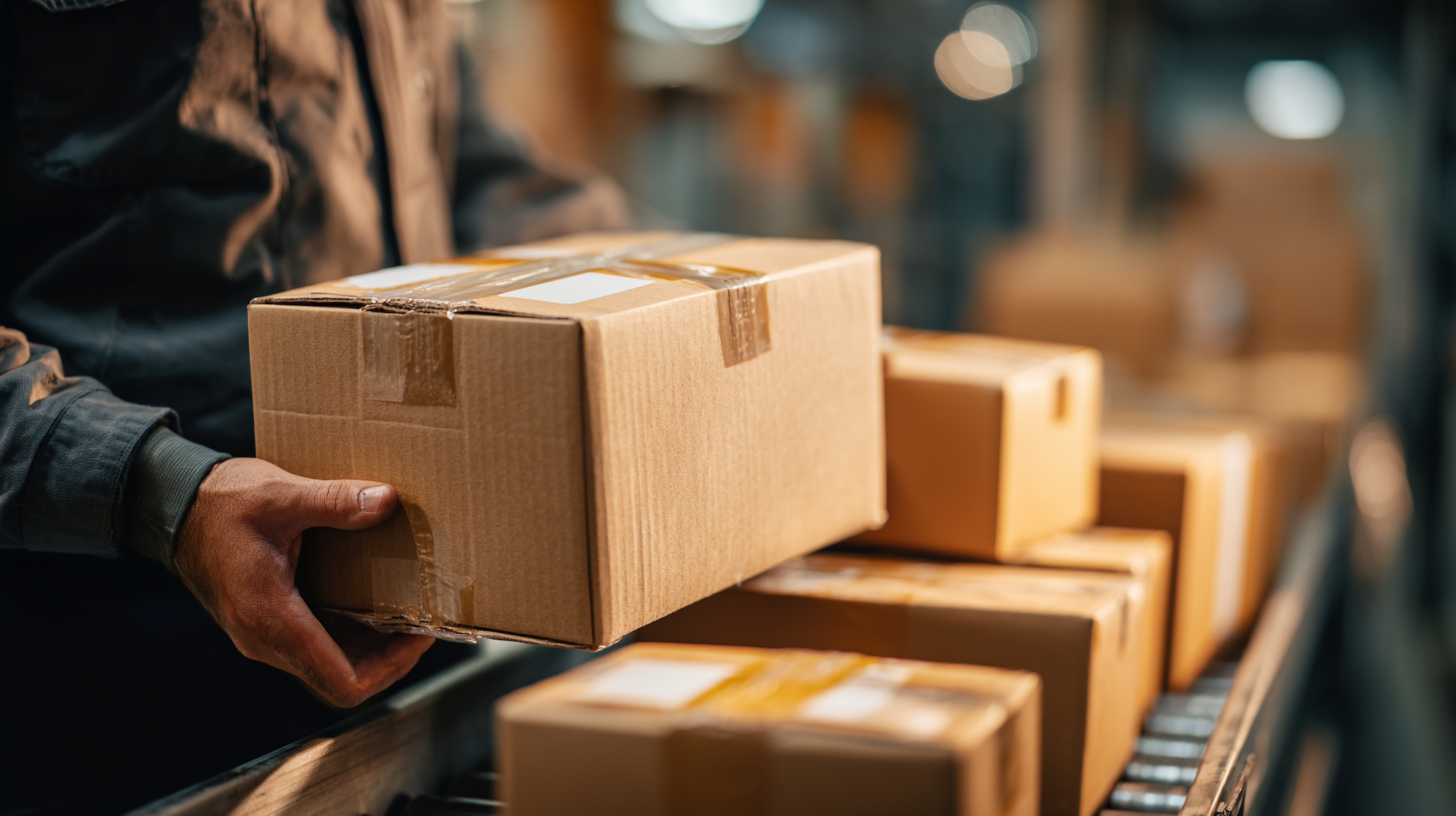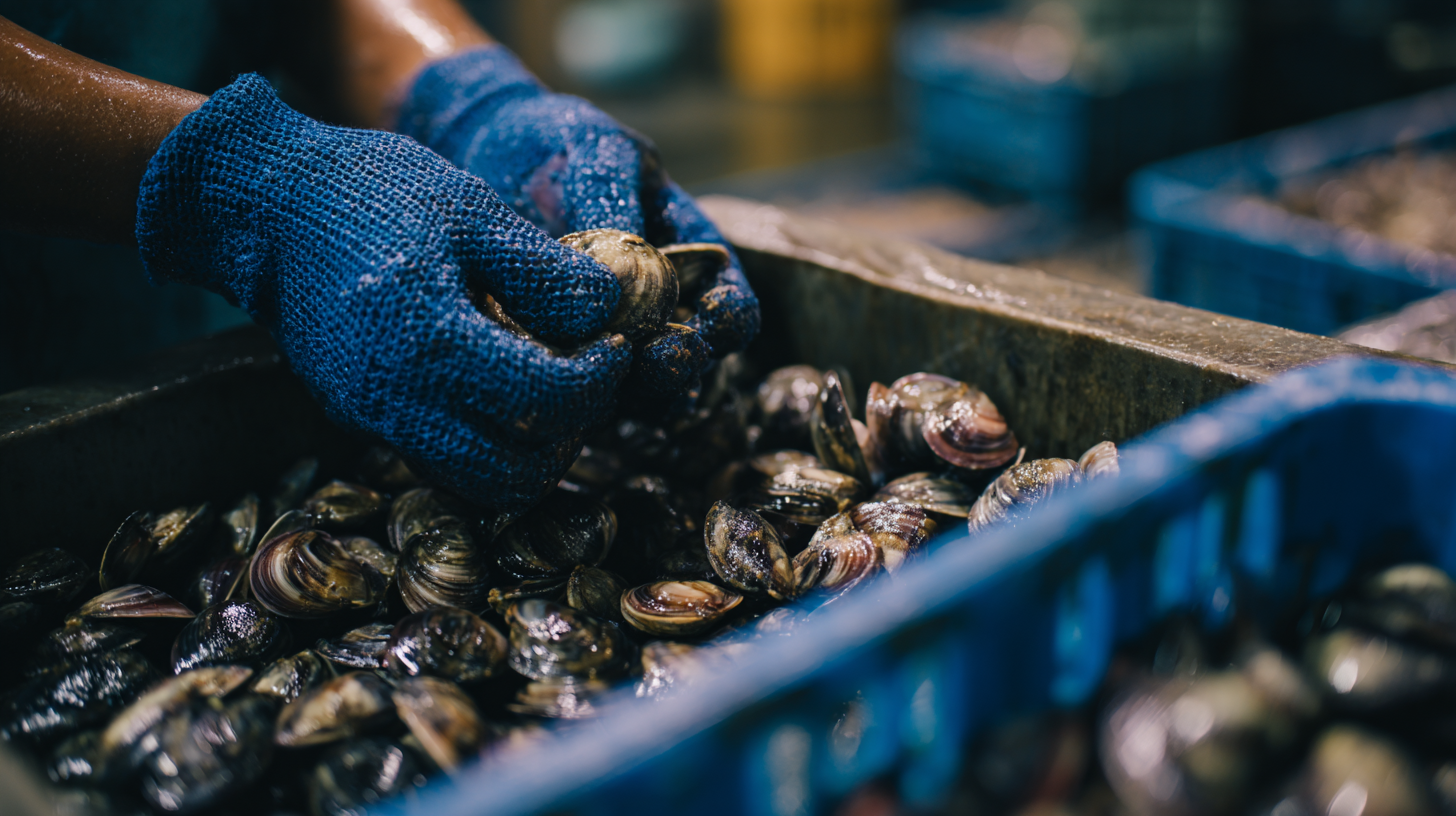Ultimate Guide to Mastering Clam Packaging for Global Buyers
In the ever-evolving seafood industry, clam packaging has emerged as a critical factor in ensuring product quality, safety, and sustainability for global buyers. According to a report by the Seafood Research Institute, the global clam market is projected to reach USD 9 billion by 2025, with an increasing demand for effective packaging solutions to meet the stringent standards of food safety and environmental conservation. As consumers become more health-conscious and environmentally aware, the packaging of clams plays a vital role in preserving freshness while minimizing ecological impact. This ultimate guide aims to equip buyers with essential knowledge and strategies for mastering clam packaging, ensuring they stay ahead in a competitive marketplace while satisfying the diverse needs of consumers worldwide.

Understanding the Importance of Effective Clam Packaging for Global Markets
Effective clam packaging plays a crucial role in the global seafood market, where the quality and freshness of the product are paramount. For buyers across different regions, packaging serves not only as a protective layer but also as an essential marketing tool.
High-quality packaging minimizes the risk of contamination, preserves the product's freshness, and extends shelf life, making it a significant factor in purchasing decisions. This is particularly important for international shipping, where clams must endure various climates and handling conditions.
Moreover, attractive and informative packaging can significantly enhance brand visibility and consumer trust. Packaging that communicates sustainability practices, nutritional information, and preparation methods can set a product apart in a competitive market.
As global consumers become increasingly conscious of their food choices, brands that prioritize effective clam packaging can tap into the growing demand for transparency and responsible sourcing.
By focusing on the aesthetics and functionality of packaging, businesses can not only protect their product but also foster a deeper connection with their customers.
Key Materials and Designs for Sustainable Clam Packaging Solutions
When it comes to sustainable clam packaging solutions, selecting the right materials and design can significantly impact not only the environment but also the quality of the products. One of the most promising materials is biodegradable plastics, which break down more easily than traditional plastics, reducing their long-term footprint. Additionally, materials made from renewable resources, such as paper and plant-based options, can provide functional and visually appealing alternatives that enhance product presentation while being eco-friendly.
Design also plays a crucial role in sustainable clam packaging. Innovative designs that emphasize minimalism can help reduce material use without compromising the protection and integrity of the clams. Features like water-resistant coatings and breathable vents can enhance freshness and extend shelf life, allowing for efficient transportation across global markets. By integrating sustainable practices in both materials and designs, businesses can meet the growing demand for environmental responsibility while attracting eco-conscious consumers.
Clam Packaging Material Sustainability
Essential Packaging Regulations and Standards for International Buyers
When venturing into the global market, understanding essential packaging regulations and standards is crucial for international buyers looking to source clams. Different countries have their own guidelines regarding food safety, labeling, and environmental sustainability, which can significantly impact how products are packaged. For example, the European Union has stringent regulations on materials that come into contact with food, requiring clear labeling and traceability to ensure consumer safety. Similarly, the U.S. Food and Drug Administration (FDA) enforces rules that govern how seafood must be packaged, ensuring they meet quality and sanitary standards.
Moreover, compliance with international standards is not just about adhering to legal requirements; it is also a key factor in building trust and reputation in the global marketplace. Buyers should familiarize themselves with standards set by organizations like the International Organization for Standardization (ISO) and the World Packaging Organization (WPO). These frameworks provide best practices for sustainable packaging solutions, encouraging the use of eco-friendly materials and reducing waste—all of which resonate with today’s environmentally conscious consumers. By aligning packaging strategies with these regulations and standards, international buyers can enhance product appeal and ensure a smoother market entry while satisfying legal obligations.

Techniques for Enhancing the Shelf Life of Clam Products through Packaging
When it comes to packaging clams for global distribution, enhancing the shelf life of these seafood products is paramount. The integrity of clams can be compromised by environmental factors such as temperature fluctuations, oxygen exposure, and moisture, leading to spoilage. One effective technique in clam packaging is the use of vacuum sealing. This method removes air from the package, significantly slowing down the growth of bacteria and mold, which are responsible for reducing the product's viability. Vacuum-sealed clams can maintain their freshness for weeks, ensuring that they reach international markets in optimal condition.

Another innovative approach involves incorporating modified atmosphere packaging (MAP). This technique alters the gases present within the packaging, replacing oxygen with a combination of nitrogen and carbon dioxide. By creating an environment less conducive to microbial growth, MAP effectively prolongs the shelf life of clams while preserving their taste and texture. Additionally, using high-barrier films that offer protection against moisture and UV light can further safeguard the product, ensuring that clams remain market-ready even after weeks of storage. Together, these strategies not only enhance product longevity but also satisfy the demands of global consumers for high-quality seafood.
Innovative Marketing Strategies for Clam Packaging to Attract Global Consumers
In today’s competitive seafood market, innovative marketing strategies are crucial for clam packaging to appeal to global consumers. According to a report by the Food and Agriculture Organization (FAO), the global demand for seafood is projected to increase by 20% over the next decade, highlighting a significant opportunity for brands that can effectively engage with their target audience. One effective approach is to utilize sustainable packaging solutions, which not only meet regulatory standards but also resonate with eco-conscious consumers. Research from Nielsen shows that 66% of global consumers are willing to pay more for sustainable products, making it a strategic focus for clam brands seeking to differentiate themselves in the marketplace.
Additionally, storytelling plays a vital role in attracting consumers. Packaging that features rich narratives about the source of the clams, traditional harvesting methods, and the communities involved can create an emotional connection with consumers. A 2021 study by the Seafood Nutrition Partnership found that nearly 70% of consumers are influenced by storytelling when making purchasing decisions. By integrating these storytelling elements into their packaging, clam producers can foster trust and loyalty among consumers, encourage repeat purchases, and strengthen their brand identity in the ever-evolving global seafood landscape.
Related Posts
-

Addressing Challenges in Clam Packaging for Optimal Product Preservation
-

Essential Guide to Choosing the Right Stock Clamshell Packaging for Global Markets
-

5 Essential Tips for Choosing the Best Blister Packaging Materials
-

How to Optimize Your Blister Card Packaging for Enhanced Product Visibility and Sales Performance
-

Ultimate Checklist for Optimizing Your Thermoforming Plastic Production Process
-

Essential Checklist for Choosing the Right Plastic Clamshells for Your Products
